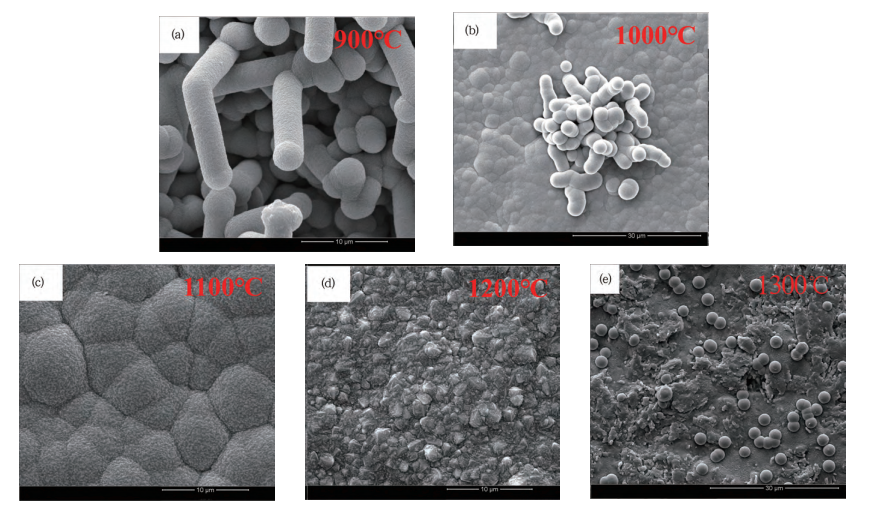
- English
- Español
- Português
- русский
- Français
- 日本語
- Deutsch
- tiếng Việt
- Italiano
- Nederlands
- ภาษาไทย
- Polski
- 한국어
- Svenska
- magyar
- Malay
- বাংলা ভাষার
- Dansk
- Suomi
- हिन्दी
- Pilipino
- Türkçe
- Gaeilge
- العربية
- Indonesia
- Norsk
- تمل
- český
- ελληνικά
- український
- Javanese
- فارسی
- தமிழ்
- తెలుగు
- नेपाली
- Burmese
- български
- ລາວ
- Latine
- Қазақша
- Euskal
- Azərbaycan
- Slovenský jazyk
- Македонски
- Lietuvos
- Eesti Keel
- Română
- Slovenski
- मराठी
- Srpski језик
The Impact of Temperature on CVD-SiC Coatings
2023-10-27
Chemical Vapor Deposition (CVD) is a versatile technique for producing high-quality coatings with various applications in industries such as aerospace, electronics, and materials science. CVD-SiC coatings are known for their exceptional properties, including high temperature resistance, mechanical strength, and excellent corrosion resistance. The growth process of CVD-SiC is highly complex and sensitive to several parameters, with temperature being a critical factor. In this article, we will explore the effects of temperature on CVD-SiC coatings and the importance of selecting the optimum deposition temperature.
The growth process of CVD-SiC is relatively complex, and the process can be summarised as follows: at high temperatures, the MTS is thermally decomposed to form small carbon and silicon molecules, the main carbon source molecules are CH3, C2H2 and C2H4, and the main silicon source molecules are SiCl2 and SiCl3, etc.; these small carbon and silicon molecules are then transported by carrier and dilution gases to the vicinity of the surface of the graphite substrate, and then they are adsorbed in the form of adsorbate state. These small molecules will be transported to the surface of graphite substrate by the carrier gas and dilution gas, and then these small molecules will be adsorbed on the surface of the substrate in the form of adsorption state, and then the small molecules will react with each other to form small droplets and grow up, and the droplets will also merge with each other, and the reaction is accompanied by the formation of the intermediate by-products (HCl gas); because of the high temperature of the surface of the graphite substrate, the intermediate gases will be dislodged from the surface of the substrate, and then the residual C and Si will be formed into a solid state. Finally, the C and Si remaining on the substrate surface will form a solid phase SiC to form a SiC coating.
The temperature in CVD-SiC coating processes is a critical parameter that affects growth rate, crystallinity, homogeneity, the formation of by-products, substrate compatibility, and energy costs. The choice of an optimum temperature, in this case, 1100°C, represents a trade-off between these factors to achieve the desired coating quality and properties.





